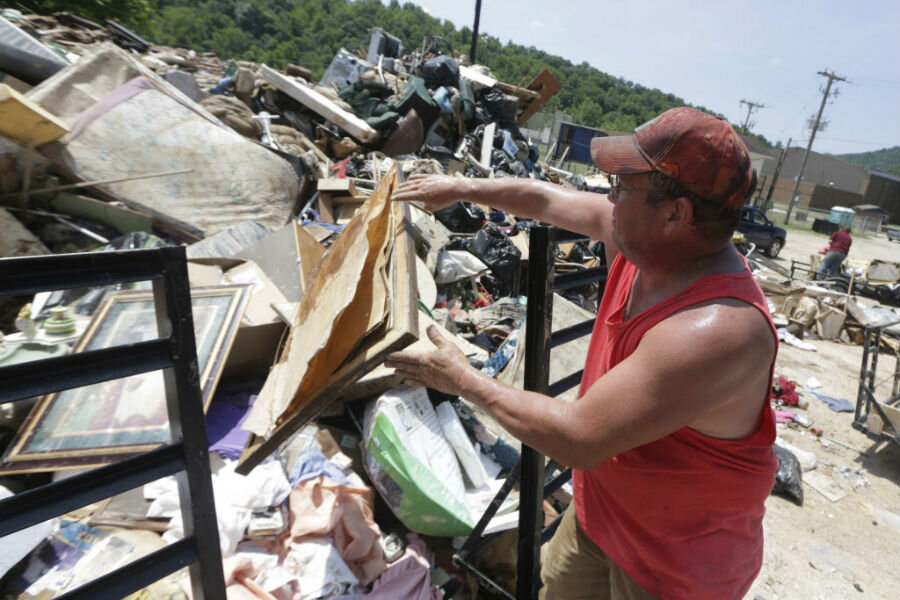After rains, where is West Virginia in flood recovery?
Loading...
West Virginia continues to pick up the pieces after last week's flooding devastated regions of the state.
It was the worst flooding the state has seen in decades, and for some areas it was the worst in a century, Gov. Earl Ray Tomblin said.
Rains poured down starting last Thursday, dropping as much as eight to 10 inches in a few hours in some parts of the state. Rivers and creeks swelled, causing landslides, washing out roads, and overwhelming nearby homes. The Greenbrier River at Hilldale rose to more than 19 feet above flood stage, the highest since the 19th century, reports The New York Times. Emergency response personnel and the state's National Guard troops rescued people from rooftops.
By Friday night, the governor had announced a state of emergency in all but 11 of the state's 55 counties. Mr. Tomblin said that 66,000 people were without power.
On Saturday, President Obama declared the flooding, which left 23 people dead, a major disaster, making federal disaster assistance available to residents of the three hardest hit counties: Greenbrier, Kanawha, and Nicholas. His announcement came after feedback from the Federal Emergency Management Agency (FEMA).
Yesterday, Governor Tomblin asked that federal assistance be extended to seven more counties.
"As cleanup continues in so many communities across West Virginia, we are seeing the overwhelming damage that has been left behind," he said in a statement, citing the need for federal funds to help West Virginians "rebuild their homes, businesses and communities."
The agency has reportedly already received thousands of applications for those funds from residents of the three counties Obama designated for federal aid. By Monday morning, they had more than 1,000 applications. That number had risen to 2,600 by Tuesday afternoon, when FEMA confirmed that 800 of those claims were already passed over to inspectors.
The federal assistance includes "grants for temporary housing and home repairs, low-cost loans to cover uninsured property losses, and other programs to help individuals and business owners recover from the effects of the disaster."
There is just under $300,000 in federal funding currently available to aid those effected by the disaster in the three counties.
A FEMA spokesman said that they would continue to conduct damage assessments in other counties over the coming days "in order to determine their eligibility for federal funding." Right now those federal funds are only available for people who live in the three designated counties.
Across the state, 1,200 homes were severely damaged or destroyed in the flooding, CNN reports. In Kanawaha County alone 400 homes and 70 businesses were completely destroyed, according to a county spokesman.
FEMA has opened up Mobile Disaster Recovery Centers for the hardest-hit areas, such as White Sulphur Springs in Greenbrier County, the area which saw the largest number of fatalities. And the State's Commission for National and Community Service has opened up an online platform where volunteers can sign up to help local recovery.
Meanwhile, West Virginians are taking their own stock of damage as they begin to think about moving forward.
"You get up and rebuild with the help of everyone around," White Sulphur Springs resident McKenzie Moya, who lost her home, told local NBC-affiliate WVVA. "And do you think White Sulphur can do that? Absolutely."





